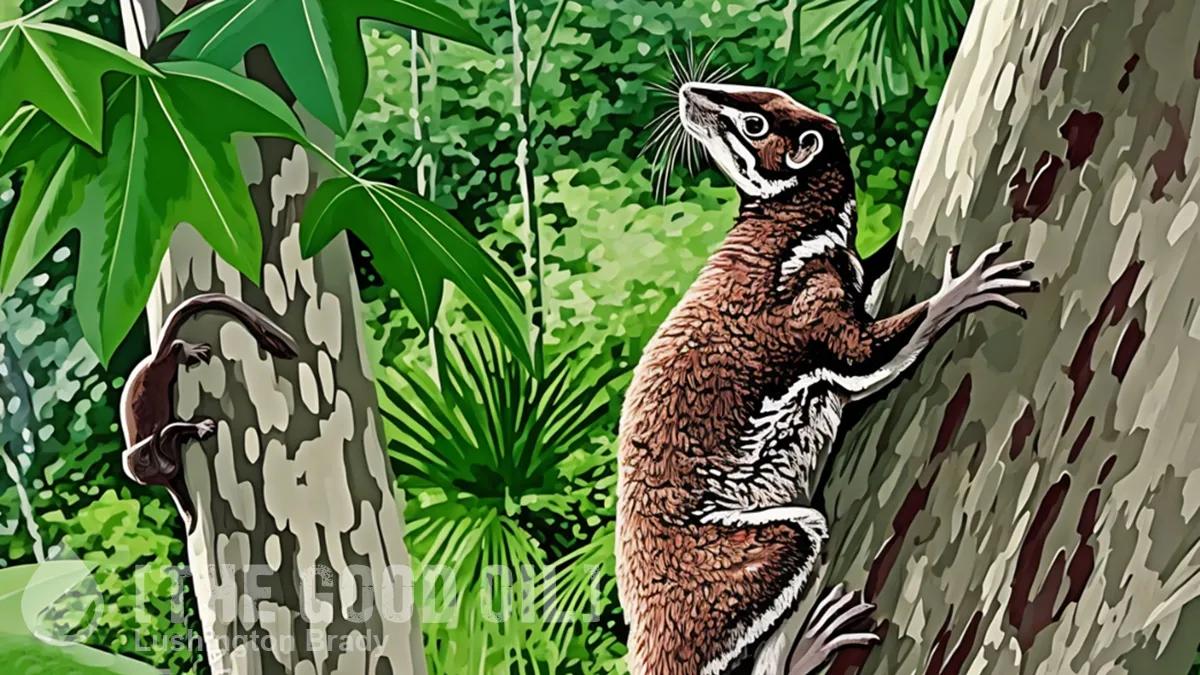We tend to think of history as a series of distinct ‘periods’. For instance, Egyptians > Greeks > Romans and so on. Except that it’s not so clear cut at all. Ancient Egypt endured right through to the days of the Roman Empire, when it was already inconceivably old. Cleopatra lived closer to us in time than she did to the building of the pyramids. Ancient Greece continued long after a few upstart villages on the Tiber rose to dominate the Classical World.
A similarly erroneous mental picture of the evolution of life on Earth goes something like this: fish > amphibians > dinosaurs > mammals. While that’s not completely wrong, it obscures some key details: such as, for instance, that mammals and dinosaurs both evolved at roughly the same time. The first known true dinosaur appeared 243 million years ago. The earliest known mammal appeared just 20 million years later.
Yet, as we all know, dinosaurs were the dominant life form for another 180 million years – until they suddenly weren’t. In the aftermath of the dinosaurs’ extinction, mammals quickly rose to conquer the Earth after waiting in the wings for an eon. Yet, while the dinosaurs’ erasure cleared the stage for mammals to go forth and multiply, they’d already been making evolutionary leaps that prepared their path to dominance for several million years.
To whit: coming down from the trees.
For tens of millions of years, mammals had been largely arboreal or subterranean, which was probably a good idea, with all those dinosaurs stomping around. But, just a few million years before the dinosaurs were obliterated by an asteroid, mammals were quietly scuttling down the tree trunks.
The study, published today in the journal Palaeontology, provides fresh evidence that many mammals were already shifting toward a more ground-based lifestyle leading up to the asteroid’s impact.
By analysing small-fossilised bone fragments, specifically end of limb bones, from marsupial and placental mammals found in Western North America – the only place with a well-preserved terrestrial fossil record from this time – the team discovered signs that these mammals were adapting to life on the ground. End of limb bones were analysed as they bear signatures of locomotory habit that can be statistically compared with modern mammals.
What made the mammals almost seem to anticipate the extinction of the dinosaurs?
Lead author Professor Christine Janis from the University of Bristol's School of Earth Sciences said: “It was already known that plant life changed toward the end of the Cretaceous, with flowering plants, known as angiosperms, creating more diverse habitats on the ground. We also knew that tree dwelling mammals struggled after the asteroid impact. What had not been documented, was whether mammals were becoming more terrestrial, in line with the habitat changes.”
[…] “The vegetational habitat was more important for the course of Cretaceous mammalian evolution than any influence from dinosaurs.”
One mammal species that chose to keep to the trees was a small, possum-like creature, weighing about a kilo, called Mixodectes pungens. Inhabiting what is now western North America some 62 million years ago, it has long been mostly a mystery, but new research is shedding some revealing light on the long-dead creatures.
The study, co-authored by Yale anthropologist Eric Sargis, demonstrates that the mature adult Mixodectes weighed about three pounds, dwelled in trees, and largely dined on leaves. It also shows that these arboreal mammals – an extinct family known as mixodectids – and humans occupy relatively close branches on the evolutionary tree.
“A 62-million-year-old skeleton of this quality and completeness offers novel insights into mixodectids, including a much clearer picture of their evolutionary relationships,” said Sargis, professor of anthropology in Yale’s Faculty of Arts and Sciences, curator of vertebrate paleontology and mammalogy at Yale Peabody Museum, and the director of the Yale Institute for Biospheric Studies.
Those evolutionary relationships include… us.
While not a direct ancestor of the creatures which eventually evolved into humans, they are fairly close cousins.
“Our findings show that they are close relatives of primates and colugos – flying lemurs native to Southeast Asia – making them fairly close relatives of humans.”
The researchers determined that the skeleton belonged to a mature adult that weighed about 1.3 kilograms, or 2.9 pounds. The anatomy of the animal’s limbs and claws indicate that it was arboreal and capable of vertically clinging to tree trunks and branches. Its molar teeth had crests to break down abrasive material, suggesting it was omnivorous and primarily ate leaves, the study showed.
“This fossil skeleton provides new evidence concerning how placental mammals diversified ecologically following the extinction of the dinosaurs,” said Chester, a curatorial affiliate of vertebrate paleontology at the Yale Peabody Museum. “Characteristics such as a larger body mass and an increased reliance on leaves allowed Mixodectes to thrive in the same trees likely shared with other early primate relatives.”
If nothing else, Mixodectes shows that mammals were rapidly growing bigger in the new, dinosaur-free ecosytem. For hundreds of millions of years, mammals remained around the size of a large rat. At over 60cm from nose to tail, Mixodectes was a big boy – though nothing on what mammals would eventually grow to.
While the blue whale holds the crown of the largest animal to ever live, the largest known land mammal was a species of giant rhino which inhabited Central Asia around 30 million years ago. At seven metres tall (compared to a giraffe’s five metres) and eight metres long, Paraceratherium linxiaense was quite the monster.









